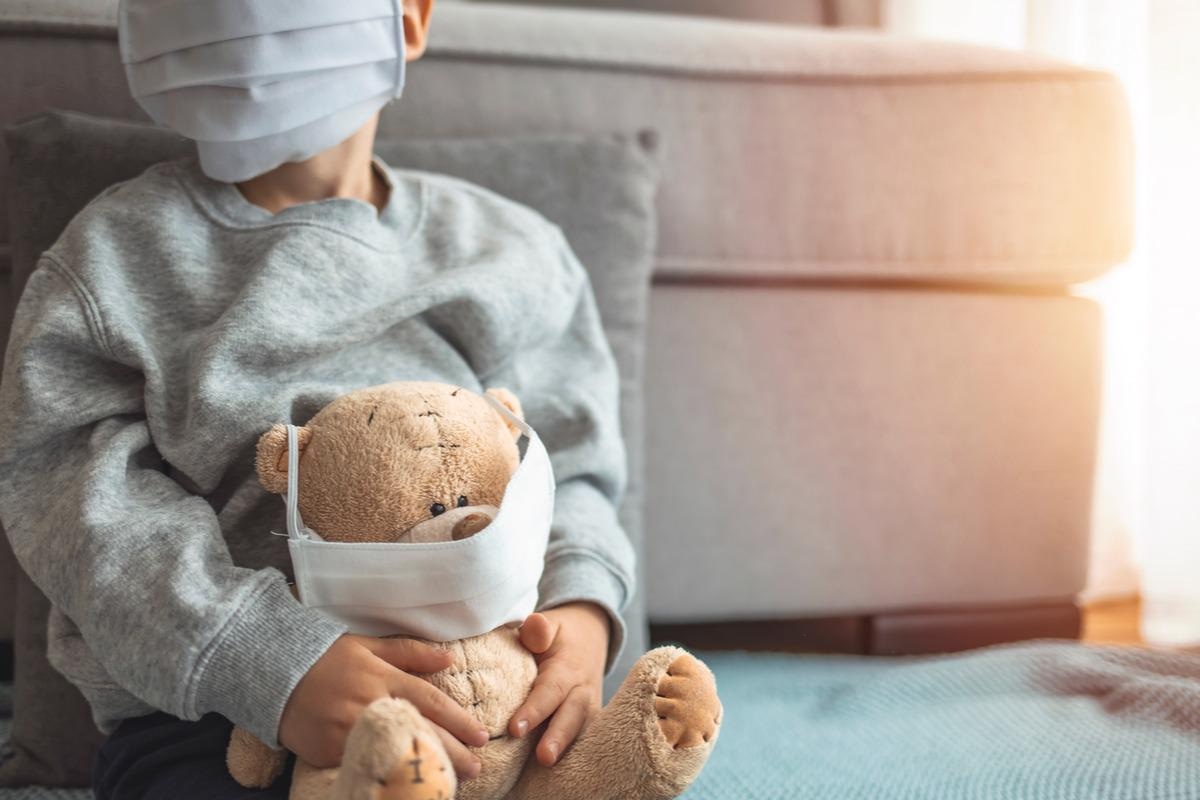The team suggests that these superior immune responses are derived from prior HCoV exposures and demonstrate that they are upregulated by SARS-CoV-2 infection.
 Study: Boosted immunity to the common cold might protect children from COVID-19. Image Credit: Dragana Gordic/Shutterstock
Study: Boosted immunity to the common cold might protect children from COVID-19. Image Credit: Dragana Gordic/Shutterstock
Previous studies have shown that biological age of an individual is the primary risk factor associated with the development of severe coronavirus 2019 (COVID-19). As of 27 October 2021, nearly 76% of the ~737,000 cumulative deaths in the United States, involved older individuals, aged 65 years or more. Notably, the COVID-19 related hospitalization or death rate in this age group is approximately 1,000–8,000 times higher than in the younger 0–17-year-old group. In another study, SARS-CoV-2 related mortality has been the lowest among children aged 5-9 years. However, the answer to, why SARS-CoV-2 infection tends to be milder or asymptomatic in children and young individuals, wasn’t explained yet.
Background
SARS-CoV-2 is a new coronavirus to human population, however, most of the people throughout their lives have been exposed to or infected with other antigenically related seasonal common-cold coronaviruses (HCoV) and have developed detectable acquired immunity against them. HKU1 and OC43 are two such closely related HCoVs that share extensive sequence homology with SARS-CoV-2. Few studies have shown cross-reactivity of the adaptive immune response to these viruses with SARS-CoV-2 antigens. Another report suggested that recent HCoV infections are associated with a reduction in COVID-19 severity, however, some reports have even drawn contrary conclusions.
Dowell and the team aimed at this study to find the immunological relationship between pre-existing responses to endemic HCoVs and SARS-CoV-2, and to figure out how would such cross-reactivity affect disease outcomes across different age groups.
The study involved a cohort of 91 children and 154 adults, who had mild or asymptomatic disease in the United Kingdom during the latter half of 2020. Their convalescent humoral (antibody) and cellular (T cell) immune responses to SARS-CoV-2 were quantitatively profiled. Immune responses to other endemic coronaviruses were also quantitated.
Comparison of Humoral immune responses
Both children and adults produced robust antibody responses against the SARS-CoV-2 receptor-binding domain (RBD), the N-terminal domain and the full ectodomain of spike glycoprotein, as measured by an electro-chemiluminescence multiplex assay. Nevertheless, compared to adults, children showed a higher but statistically insignificant trend for overall spike-specific antibody production.
Noticeably, antibody levels to all four endemic HCoVs were boosted in SARS-CoV-2 seropositive children and adults, compared to their respective seronegative groups. The antibody levels were boosted the most in SARS-CoV-2 infected children and reached significance for HKU-1 and OC-43. In contrast, antibody levels to other unrelated common cold viruses i.e. Influenza A virus and respiratory syncytial virus which did not alter significantly, showing that the effect was specific to other HCoVs only. This demonstrated that SARS-CoV-2 infection in children specifically and significantly boosted the pre-existing immune responses to HKU-1 and OC-43 HCoVs.
The team demonstrated quantitatively that the back-boosted antibodies to OC43 and HKU1 in seropositive children were predominantly cross-reactive with the SARS-CoV-2 S2 domain, explaining the higher SARS-CoV-2-specific titer in children.
The team also found that children maintained quantitatively higher as well as more durable spike-specific antibody immune response, lasting ≥12 months after infection, in comparison to adults. These superior humoral immune responses existed for both wild-type SARS-CoV-2 and other variants of concern (VOC). In addition to neutralizing antibodies, children maintained comparatively longer-lasting non-neutralizing antibodies to spike epitopes that could provide protection through Fc-mediated effector functions.
Comparison of Cellular T-cell mediated immune responses
In similar lines to the antibody responses, children developed stronger cellular immune responses to the spike protein following SARS-CoV-2 infection. The team used an interferon-γ (IFN-γ) enzyme-linked immune absorbent spot (ELISpot) and overlapping peptide pools resulting from the spike, nucleocapsid, membrane and envelope proteins, and observed that T cell responses were similarly aroused in SARS-CoV-2 seropositive children (33/37) and adults (51/64), however, the number of spot-forming/cross-reactive T cells were double in the children that indicated towards improved protection from SARS-CoV-2 infection in children.
Cytokine production profile by SARS-CoV-2-specific T cells was compared from children and adults using a multianalyte bead assay on supernatants of ELISpot assay. Children showed differential functional response compared to adults and demonstrated that samples from adult donors showed a marked interleukin-2 (IL-2) response. In contrast, IL-2 levels in children were very low and CD8+IL-2-TNF+IFN-γ+ T cells constituted the majority of the spike-specific T cell profile in them.
Notably, T-cell mediated cellular responses were observed in 60% of the seronegative children, in comparison to seronegative adults, in which this proportion reduced to 34%.
Implications
The study indicates that in addition to the induction of S1-directed virus-neutralizing antibodies, SARS-CoV-2 vaccines, if designed to induce humoral and cellular immune responses directed to the S2 domain might provide improved protection in all age groups.
The finding that plasma antibodies in children are preferentially enriched in cross-reactive antibodies directed to conserved epitopes shared between HCoV and SARS-CoV-2 spike glycoproteins, particularly the S2 subunit, suggests a vital contribution of cross-reactive antibodies in the resolution of SARS-CoV-2 viral infection in children.